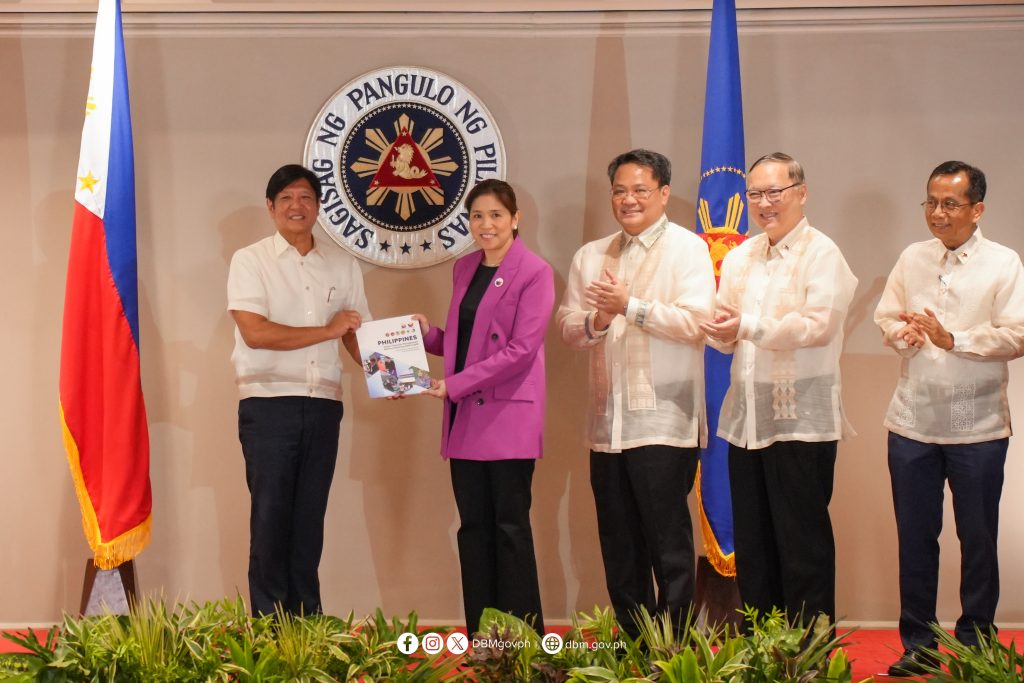Newly endorsed PFM Reforms Roadmap to boost financial inclusion
By: Department of Budget and Management
Aligned with the goals of Executive Order (EO) No. 170, s. 20221 and pursuant to EO No. 29, s. 20232, the Public Financial Management (PFM) Reforms Roadmap 2024-2028 not only transforms the bureaucracy, but also ensures that all Filipinos have access to government financial services. This effort by the PFM Committee, chaired by the Department of Budget and Management (DBM), further reinforces the National Strategy for Financial Inclusion (NSFI) 2022-2028.
DBM Secretary and PFM Committee Chairperson Amenah F. Pangandaman has been championing various reforms on digitalization and financial inclusion. This includes advocating EO 170 when she was Assistant Governor at the Bangko Sentral ng Pilipinas (BSP). The EO was prompted by challenges in distributing financial aid due to social distancing protocols amid the pandemic; now, the EO is one of the enabling policies of the roadmap.
During the 2023 League of Local Budget Officers (PHILLBO) Annual Convention, Sec. Pangandaman shared that, “[The digital transformation efforts] also complement the Implementing Rules and Regulations of EO 170 which mandates the adoption of digital payments for government disbursements and collections, ultimately promoting financial inclusion—an advocacy I have been pushing for even while I was still with the [BSP].”
Endorsed to the President
The PFM Reforms Roadmap, crafted from September 2023 to second quarter of this year, was endorsed to President Ferdinand R. Marcos Jr. last September 17 at the Malacañang Palace.

ENDORSED. DBM Secretary Amenah F. Pangandaman presents the PFM Reforms Roadmap 2024-2028 to President Ferdinand R. Marcos Jr. with (L-R) COA Chairperson Gamaliel Asis Cordoba, DICT Secretary Ivan John Uy, and NEDA Secretary Arsenio Balisacan.
With the theme, ‘Propelling Transformation: Achieving Prosperity’, the roadmap is anchored to the Philippine Development Plan 2023-2028 and is the product of collaboration between PFM member-agencies and resource institutions3, civil society organizations, the private sector, and local government units.
One of its hallmarks is the government’s sustained digital transformation agenda by strengthening the digital finance infrastructure. Government agencies and corporations will be capacitated on digitalization of financial management to bolster digital payment and collection capabilities.
Accelerating delivery of services
To strengthen cash management4, digital payments are used to speed up public spending and reduce delays in public service delivery. This includes faster distribution of cash assistance through bank accounts and interoperable electronic fund transfers, as a form of risk protection during crises.
The digitalization of government financial services is crucial, hastening the delivery of services: from the DBM’s greenlight to release of funds to frontline agencies, to the project implementation—ensuring faster service delivery to the public.
Expanding revenue collection channels
Building on this, the roadmap also focuses on the expansion of revenue collection channels through the sustained implementation of the eGovPay (Electronic Government Payment) platform5. This initiative supports inclusive finance by providing diverse payment options for fees, taxes, tolls, and other charges of government services.
Aside from providing diverse payment options, eGovPay enables financial inclusion by providing access to the financial system through a mobile phone. This helps bridge the gap for people in remote areas or those underserved by the banking system.
DBM’s sustained commitment to FI
Rest assured that the DBM shall ensure that the roadmap’s goals are achieved.
In fact, the 2025 National Expenditure Program is poised to fund programs that enable financial inclusion and enhance informal and vulnerable sectors’ access to social safety nets, meeting the strategic objectives of the NSFI.
These include expanding the information and communications technology (ICT) and digitalization initiatives of the government (Php 70.6 billion); supporting the Agricultural Credit Program of the Agriculture department (Php 2.8 billion); and strengthening the Philippine Identification System (Php 1.9 billion), as the country’s digital identity system; among others.
Together with its co-members at the Financial Inclusion Steering Committee, the DBM shall continue to do its part in the FI agenda through enabling budget policies and reforms, forging a Bagong Pilipinas where no Filipino is left behind.
1/ Adoption of Digital Payments for Government Disbursements and Collections
2/ Strengthening the Integration of Public Financial Management Information Systems, Streamlining Processes thereof, and amending Executive Order No. 55 (S. 2011) for the Purpose
3/ Composed of the DBM, Department of Finance, Commission on Audit, Bureau of the Treasury (BTr); and the National Economic and Development Authority and the Department of Information and Communications Technology (DICT) as Resource Institutions
4/ Strategic Focus Area 2: Cash Management is targeted at improving the compliance, efficiency, and accuracy of cashflow programming and its alignment with cash releases
5/ eGovPay is led by the DICT, in collaboration with the BTr and LANDBANK. Aside from being an initiative under Strategic Focus Area 2, it is also under Strategic Focus Area 5: Capacity Development, which aims to ensure efficient management of revenues and expenditure, by improving the efficiency, transparency, accuracy, and timeliness of budget and financial accountability reports
Back to News
